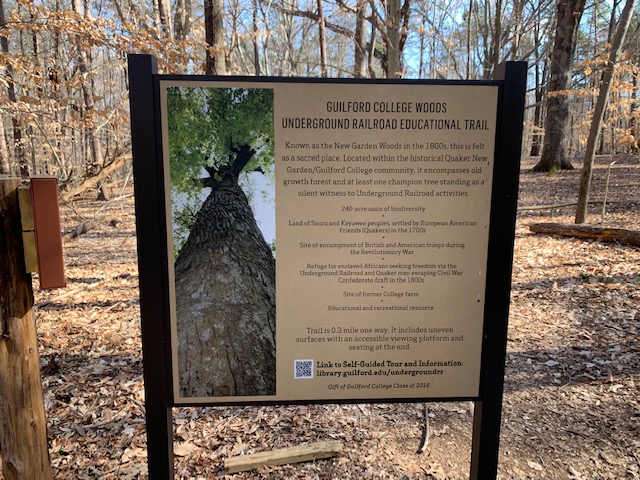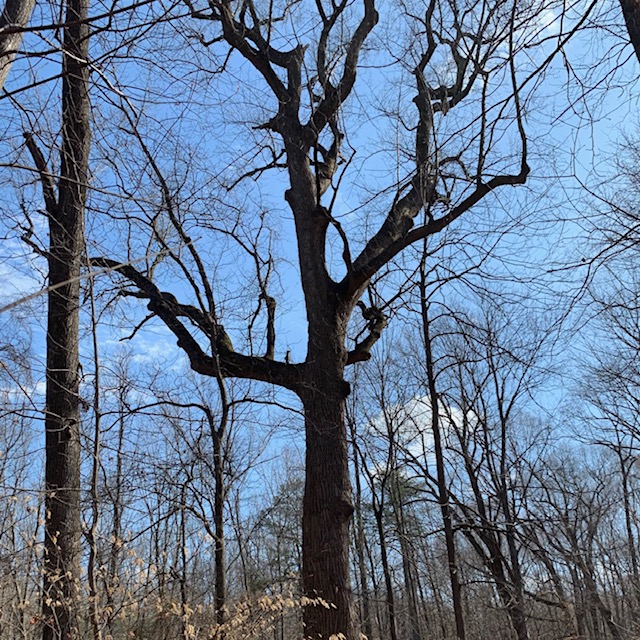Now, it’s time to get into the main reason why I had gone on that walk all those days ago in the first place: visiting the Underground Railroad tree. Leaving this side of the woods to enter the Underground Railroad Educational Trail was a sharp awakening from my peaceful, trance-like state.

The natural world had blended seamlessly together, with the air, water, and greenery living in perfect harmony, yet this road cut through it all. The clearing on the other side leading to the trail is not particularly striking on its own: it houses the same pines, oak trees, and beech trees as the other stretch of land. Continuing down the trail, passing several fallen trees, tangled roots, and crunching the dry leaves scattering the ground, I could not hope to possibly know the story of each tree I found laid to rest in its home. I felt entirely surrounded as all of my senses were presented with the serenity of my surroundings: the bird calls in the air and the rustling of leaves underneath.
This tree, a tulip poplar dating back before the 1800s, bore witness to the operation of the Underground Railroad from 1819 to 1852. The tree is the epitome of freedom and the perfect symbol of resilience, and it stands tall at the end of the 0.3-mile trail, with a relatively new viewing platform built in front of it. Given the inherently secretive nature of the Underground Railroad, the blueprints are not available, but the earliest documented case was that of John Dimery in 1819. Levi Coffin (later popularly designated as “President of the Underground Railroad”) and his cousin Vestal Coffin collaborated in this effort, and the Quakers within the New Garden community did their part by establishing a base for support for the escaping fugitives.

This racially integrated civil rights movement was among the first of its kind and spoke to the compassion of the Quaker community and the importance of these woods in offering refuge to all. Confronting this bearer of history is a powerful moment. The modern world rarely affords us the opportunity to stand still and reflect on the sacrifices that allow us to live fulfilling lives today, yet the woods gave me an opportunity to look inwards and understand the gravity of the moment. Glancing upwards to the sky, I was temporarily blinded by the Sun that decided to come back out, but soon I had the chance to view the massive tulip poplar in all its glory. It stood strong among the thinner trees surrounding it, the wise aged leader of the group. The viewing platform and its considerable size seemed to be the only thing that set the tree apart— the trees around it had not been cleared in an effort to make it a more appealing landmark. It is still in its natural, relatively undisturbed habitat. The platform itself blended into the woods relatively well.

It was raised a few meters above and in front of the tulip poplar and fitted with a minimalistic sign introducing the tree and providing a convenient QR code linked to useful information. Although it was likely unintentional, it was fascinating to see the presence of the technological world in the midst of this old growth forest, like a fusion of present day with history. This walk taught me a lot about the story of this place, and I can’t wait to come back!